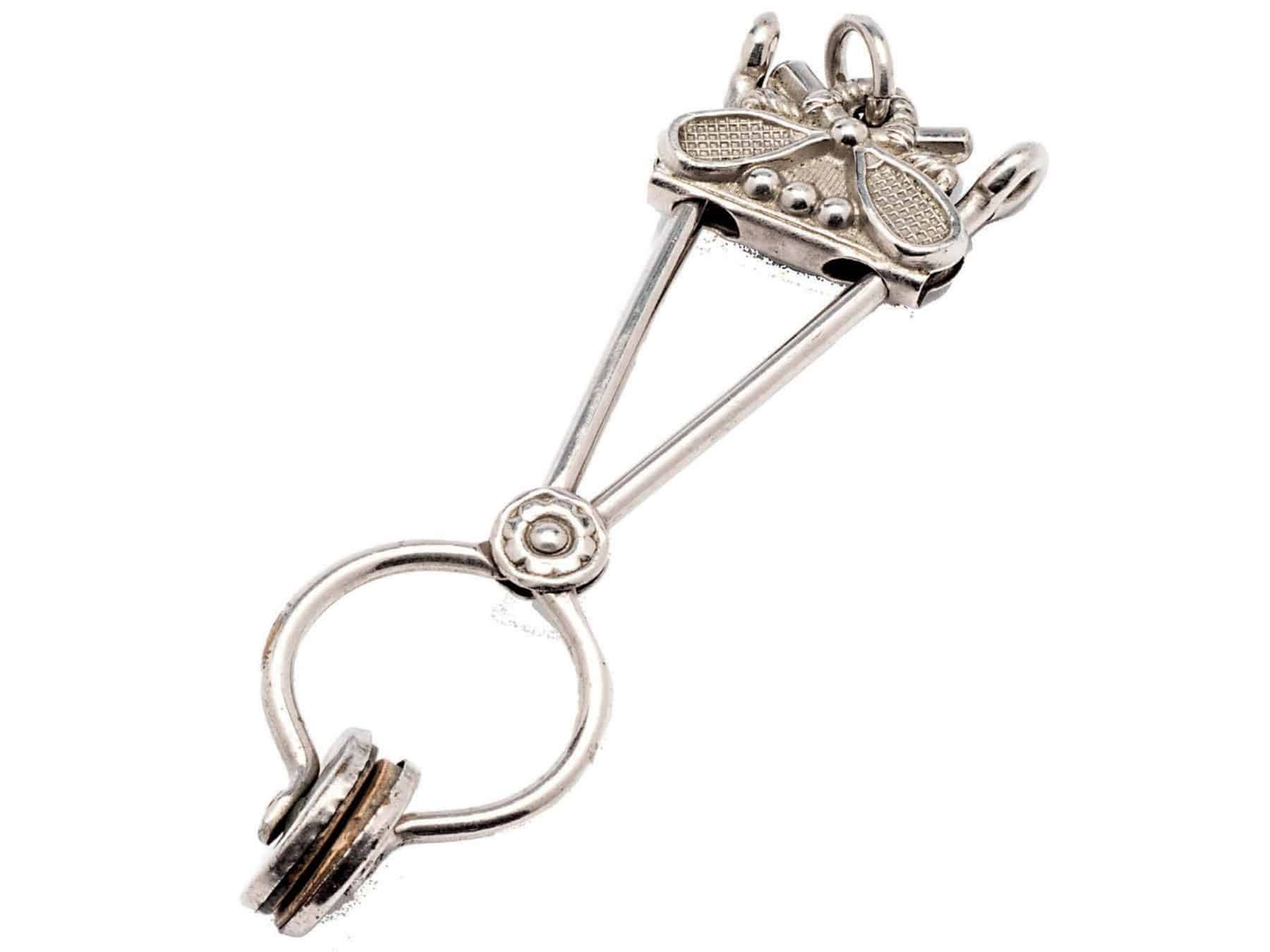History of the Skirt Lifter
In the dirtied streets of 19th century England, women of means had to be creative to avoid ruining their skirts. Skirts in this era were incredibly heavy, with many layers often totalling 6kgs or more. With the topmost layer being made of expensive materials like silks, cottons, and wools, it was important to protect them. Often, this meant using one or sometimes both hands to keep the skirts elevated. Although this was useful, it was not always practical. Some women of the time viewed this fashion as an act of oppression. Baring their ankles was viewed as socially unacceptable, but holding up their skirts left them unable to partake in activities like sports.
The Industrial Revolution and emerging middle class in Britain meant that fashion trends moved on much swifter than they previously had. Ladies of means owned a plethora of expensive dresses for day and night that took months to craft. The advent of the skirt lifter in 1846 was met with immediate success. This device usually appeared as a pair of tongs. Made from brass, the skirt lifter has two circular padded grips that hold a chunk of the material of the skirt up. The lifter then connects to a belt at waist level via a chain. The chain can be pulled to lift the skirt higher in the case of passing expansive puddles and other similar dangers.
This creation allowed women to be more active in their lives, even getting involved in sports like tennis, ice skating, and horse riding. In day-to-day life, using one’s hands to hold up skirts was not only painful after a while, but could also lead to dirty gloves. Wearing gloves was commonplace for women in the Victorian period. Having dirty gloves, however, was a mark on one’s reputation. Appearing dirty on unkempt would be a reputation-ruining moment for any Victorian lady. This is why the skirt lifter was such an important invention for women of this time.
The medieval-style chatelaine also became popular towards the end of the 19th century. This accessory was comparable to an elaborate keychain that hung from the waist. Ladies wore these in order to express their role as the ‘lady of the castle’, keeping keys for various objects around the home such as tea caddies or jewellery boxes. Sometimes, skirt lifters were incorporated into these chatelaines for their practicality and popularity. Design motifs like flowers, horseshoes, hearts, butterflies, and hands were featured on more elaborate sets of skirt lifters.

Eventually, crinoline frames were invented that allowed worn skirts to be significantly lighter. These honeycomb-shaped structures supported the top-most layers of the outfit, making the need for several layers of petticoats redundant. Today, the antique skirt lifter is a novelty item that most laypeople don't immediately understand.
The medieval-style chatelaine also became popular towards the end of the 19th century. This accessory was comparable to an elaborate keychain that hung from the waist. Ladies wore these in order to express their role as the ‘lady of the castle’, keeping keys for various objects around the home such as tea caddies or jewellery boxes. Sometimes, skirt lifters were incorporated into these chatelaines for their practicality and popularity. Design motifs like flowers, horseshoes, hearts, butterflies, and hands were featured on more elaborate sets of skirt lifters.
Eventually, crinoline frames were invented that allowed worn skirts to be significantly lighter. These honeycomb-shaped structures supported the top-most layers of the outfit, making the need for several layers of petticoats redundant. Today, the antique skirt lifter is a novelty item that most laypeople don't immediately understand.



